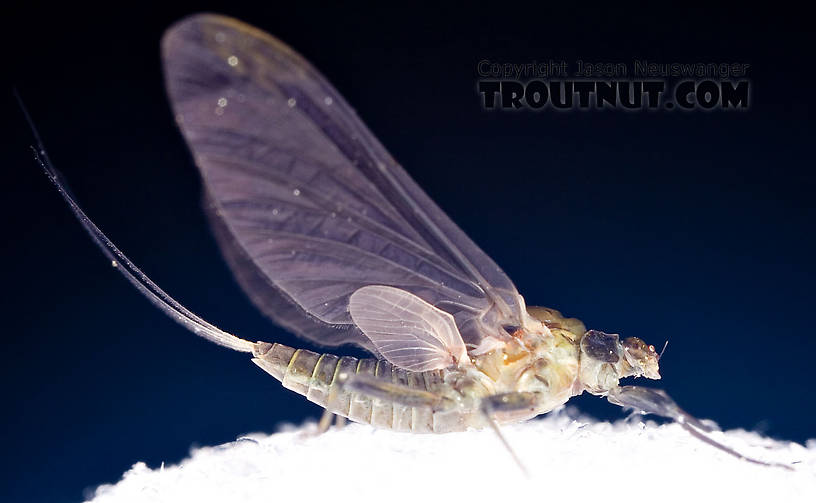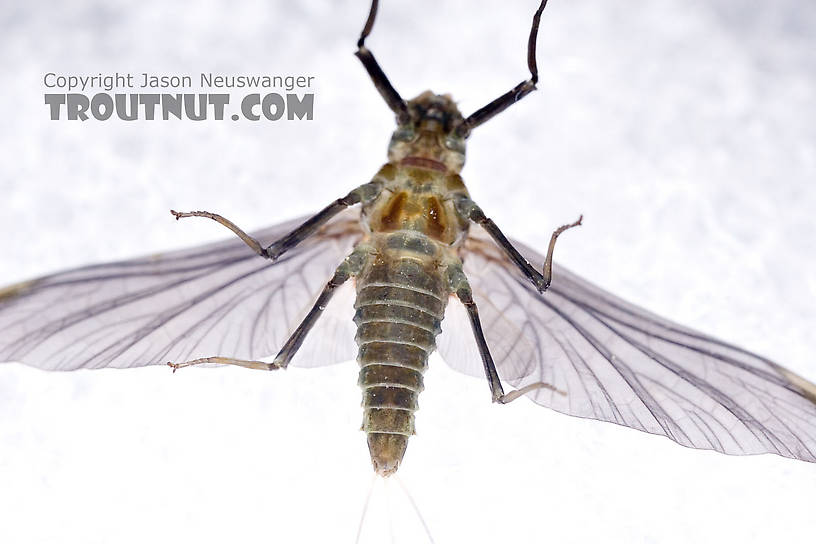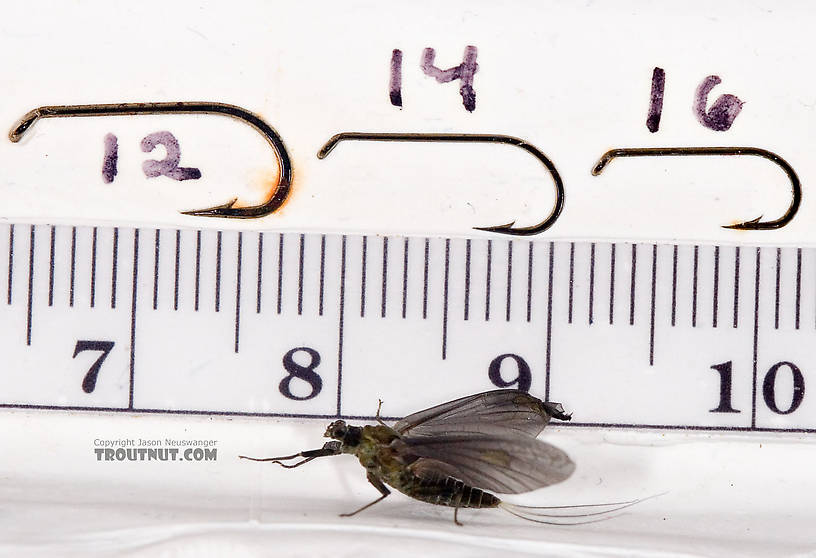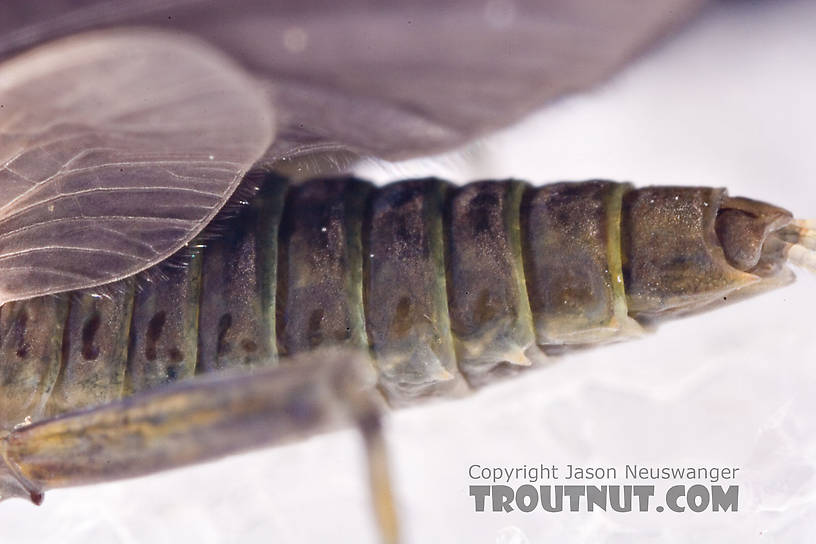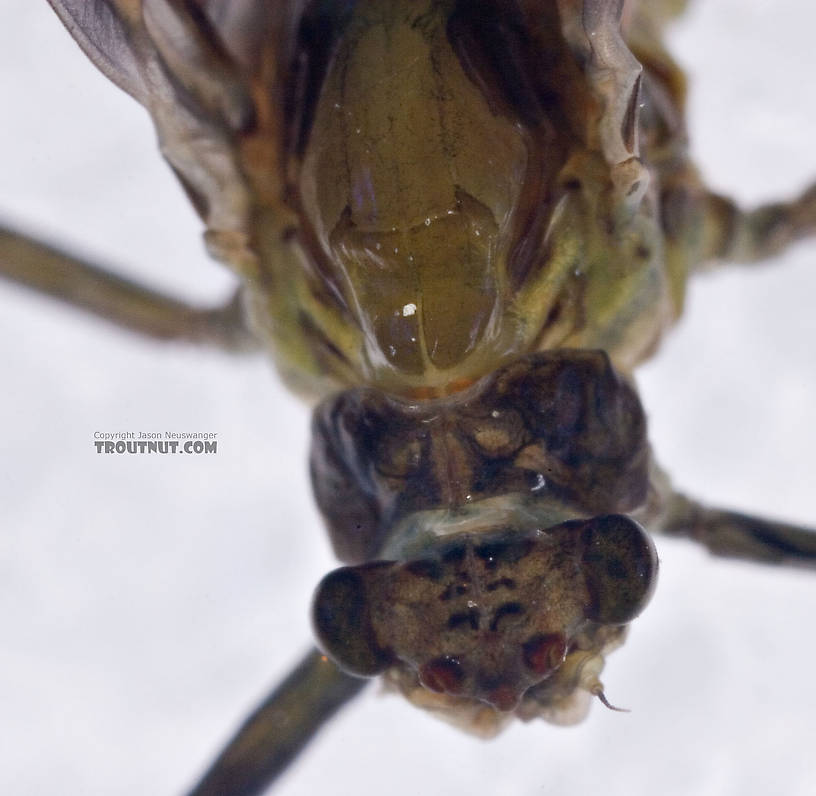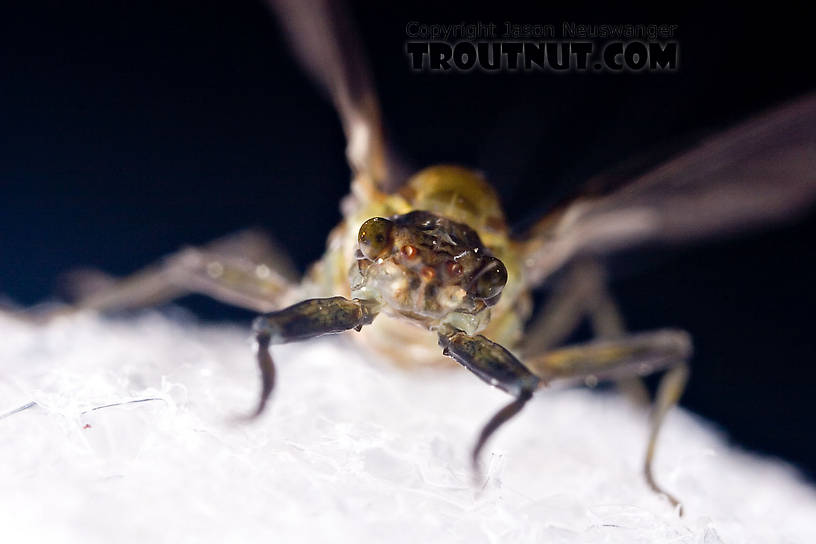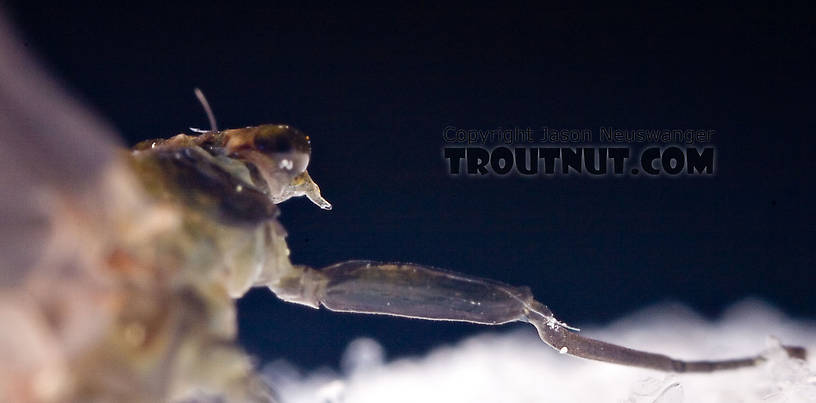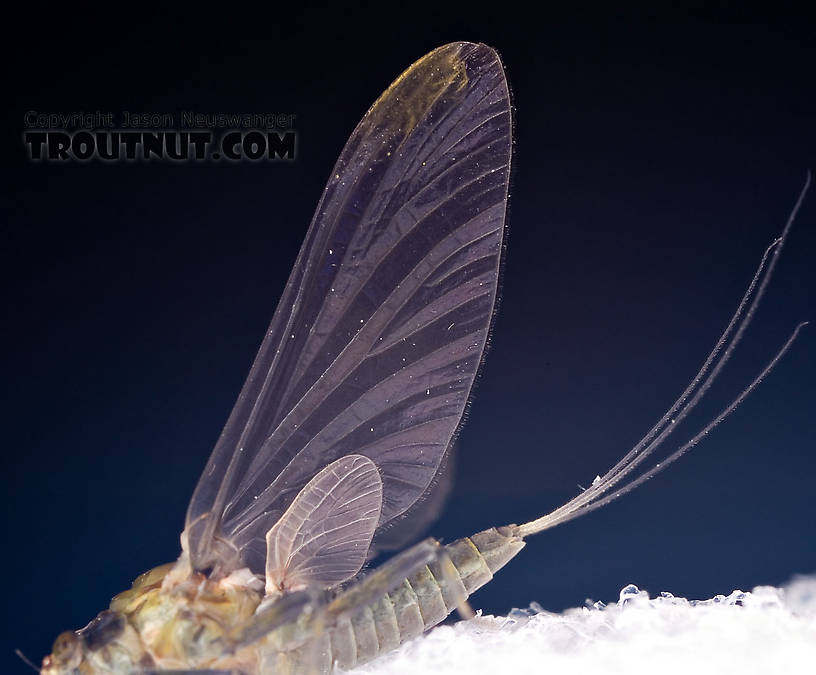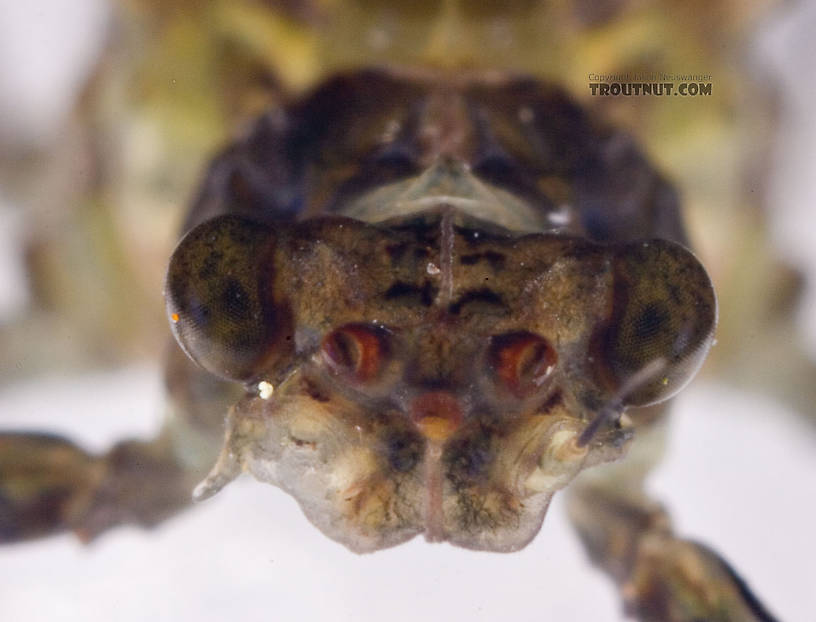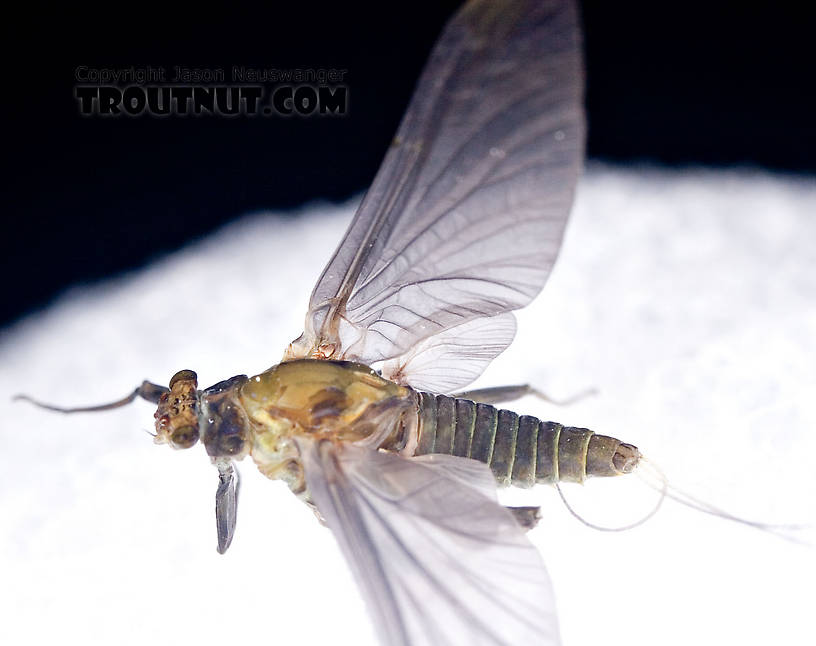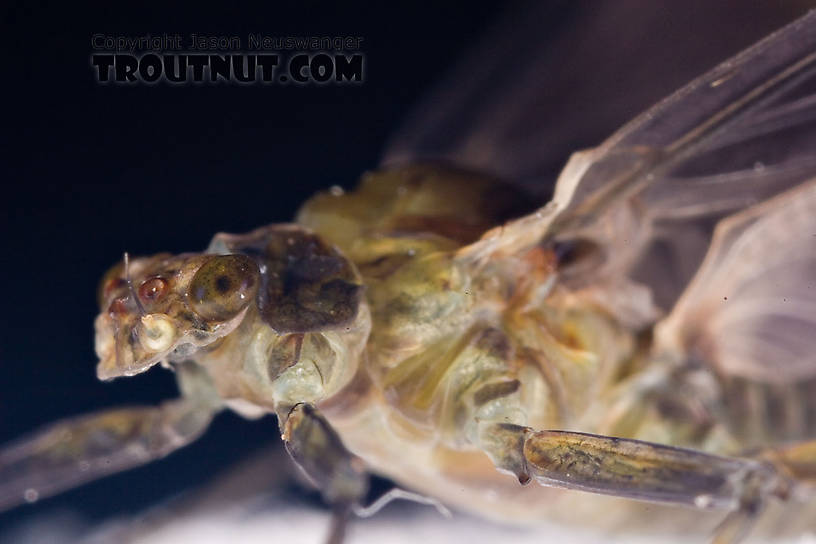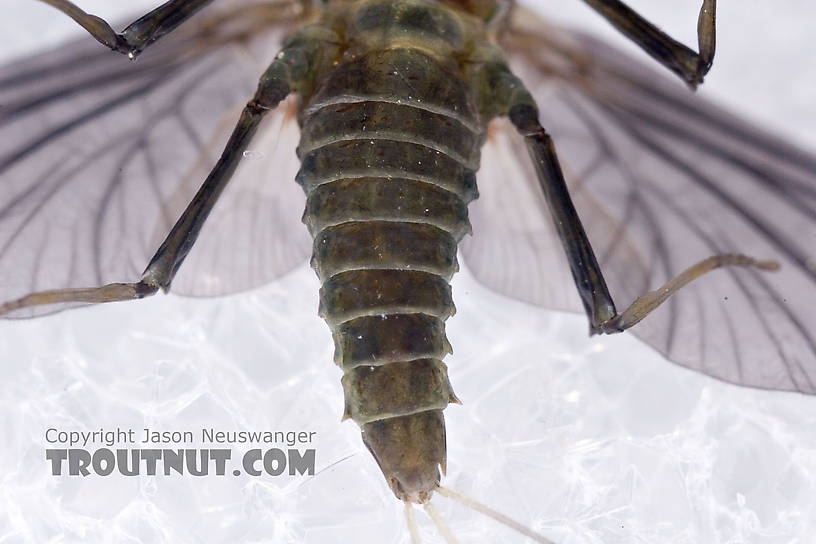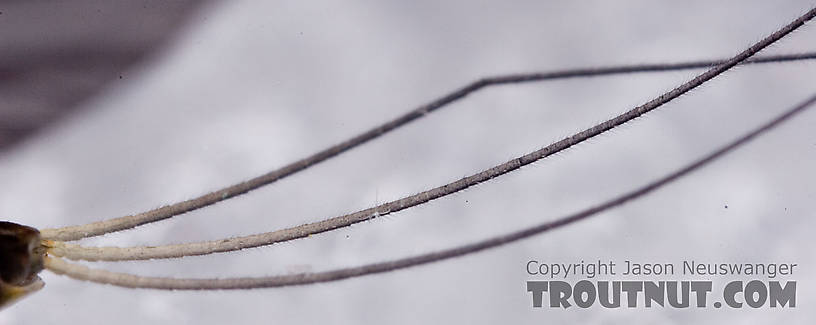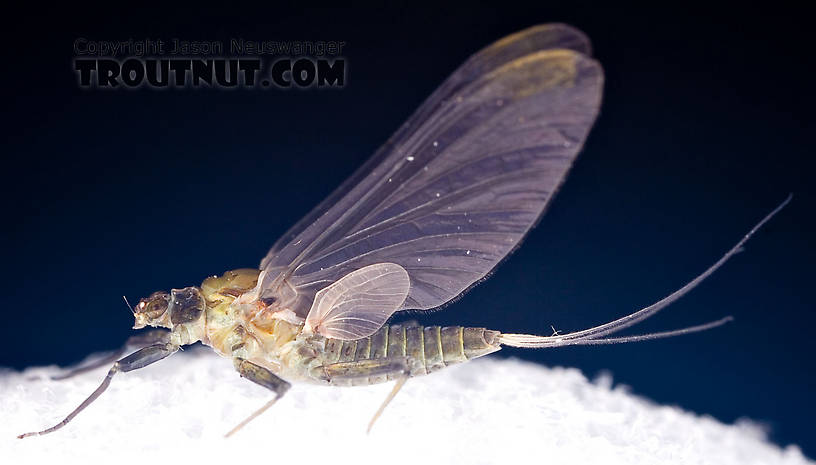Blog & Latest Updates
Fly Fishing Articles
Insects by Common Name


Female Drunella tuberculata Mayfly Dun Pictures
Classification
Kingdom
Animalia (Animals)
» Phylum
Arthropoda (Arthropods)
» Class
Insecta (Insects)
» Order
Ephemeroptera (Mayflies)
» Genus
Drunella (Blue-Winged Olives)
» Species
tuberculata
I don't know for sure that this is Drunella tuberculata, but that's my best guess for now.
It certainly has a different look and much more robust body shape from Drunella lata duns I photographed a couple weeks earlier, so I doubt it's that species. Using distribution records to eliminate other choices narrows this down to Drunella tuberculata or Drunella walkeri.
Markings described for the abdominal sternites (
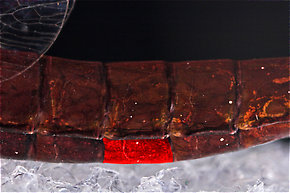
One sternite of this Isonychia bicolor mayfly spinner is highlighted in red.
This is the only Drunella mayfly I saw all day. I scooped it off the water as it emerged at around 7pm from a big Catskill tailwater.
This mayfly was collected from the West Branch of the Delaware River on June 1st, 2007 and added to Troutnut.com on June 8th, 2007.
Recent Discussions of this Dun
Insect migration 7 Replies »
Posted by Mykisslayer on Jan 30, 2014
Last reply on Feb 3, 2014 by PaulRoberts
Do adult aquatic insects travel or migrate to other watersheds or bodies of water? Or do they remain close to the area where they emerged?
ReplyAnyone recognize this Drunella? 8 Replies »I'm a bit puzzled about this one. See the specimen description for details. I know female duns are awful for identification, but this is the only one of its species I could find. Would any of you Ephemerellid experts (Konchu!!) care to take a guess?
ReplyStart a Discussion of this Dun:
Top 10 Fly Hatches
Top Gift Shop Designs
Eat mayflies.
Top Insect Specimens
Miscellaneous Sites
Troutnut.com is copyright © 2004-2024 Jason
Neuswanger (email Jason). See my FAQ for information about use of my images.
 privacy policy
privacy policy

